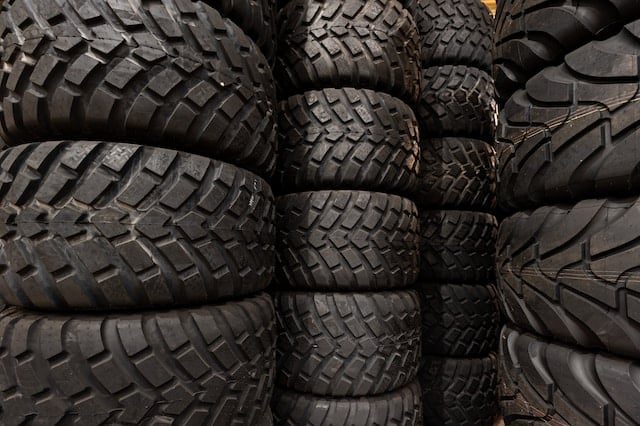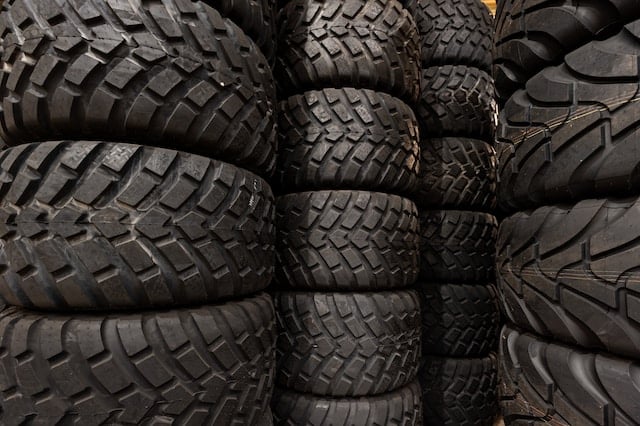
“Why do new car tires wear out so fast?” is a question that perplexes many car owners. Investing in a new car only to see its tires degrade rapidly can be frustrating and financially taxing.
Tires that come with a new car, often referred to as factory tires, tend to wear down more swiftly than their replacement or aftermarket counterparts. This accelerated wear is primarily due to the softer rubber material used in their construction, making them more prone to wear and tear. While this softness is a significant contributing factor to the swift degradation of new car tires, it’s not the sole reason.
Additionally, the longevity of your tires is influenced by a multitude of factors such as their quality, your driving habits, the load they carry, tire pressure, and the state of your car’s alignment and balance. This article will delve into these factors and help you understand why your new tires might be wearing out faster than expected.
Why Do New Car Tires Wear Out So Fast? Understanding OEM Tires

When you buy a new car or truck, you might find that the original tires, also known as Original Equipment Manufacturer (OEM) tires, only last between 20,000 to 30,000 miles. The reason behind this shorter lifespan is that both the vehicle and tire manufacturers prioritize attributes that boost the vehicle’s appeal and sales, rather than long-term tire durability.
The tires on new vehicles are designed to enhance noticeable features during a test drive, such as ride comfort and handling. These qualities often benefit from the use of softer rubber compounds. While soft rubber improves traction and ride quality, it also leads to faster tire wear.
However, this doesn’t necessarily mean they’re poor-quality tires. In fact, they might be excellent in terms of performance, but their longevity may not be their strongest feature.
[lasso id=”5547″ link_id=”2437″ ref=”amzn-fullway-hp108-all-season-truck-suv-high-performance-radial-tire-235-50r18-235-50zr18-235-50-18-235-50-18-101w-load-range-xl-4-ply-bsw-black-side-wall-utqg-380aa” sitestripe=”true”]The Motivation Behind OEM Tires
The selection of tires for your new car or truck isn’t arbitrary. It’s a decision that doesn’t prioritize long-term tire economy.
Automobile manufacturers aim to entice you into buying their vehicles. One strategy they employ is ensuring that new cars and trucks on dealership lots are equipped with comfortable and traction-rich tires.
They collaborate with renowned tire manufacturers to design tires specifically tailored to amplify the features they want you to notice while downplaying those they’d prefer you didn’t. By the time you notice the shorter tire life, you’re likely to have left the dealership and made several car payments, with your attention primarily on the new vehicle, not the tires it’s fitted with.
Expectations Vs. Reality: Tire Lifespan on New Cars
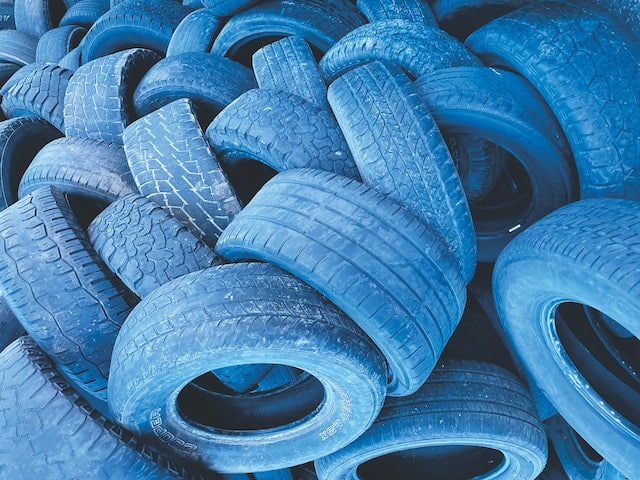
Not all new tires on new vehicles come with a short lifespan. Some perform remarkably well for extended periods. However, others may need replacing after just 20,000 to 30,000 miles.
Typically, all-season tires for average passenger cars and light trucks can last 50,000 miles or more. With new cars, there usually aren’t any existing issues that can cause tires to wear out quickly. Suspension components are in top condition, and alignment should be perfect.
Assuming no damage to these parts and proper wheel and tire balancing, there should be no reason for your tires not to last as long as possible. However, despite the expectation of at least 50,000 miles from new OEM tires (and quality replacement tires), the reality can often differ. It’s not uncommon for some new car owners to need a full tire replacement around the 20,000-mile mark. Others who purchased replacement tires projected to last 50,000 miles or more have found them only good for about 30,000 miles. In essence, there are no guarantees when it comes to tire longevity.
The Quality of Tires
The first factor to consider when investigating fast tire wear is the quality of the tires themselves. Not all tires are created equal; some are designed for longevity, while others are built for performance. High-performance tires, for instance, provide improved handling and braking capabilities, but they often come at the cost of faster wear. This is due to the softer rubber compounds used to increase grip, which unfortunately also wear down more rapidly. On the other hand, touring or all-season tires often prioritize longevity and offer a harder compound that can withstand more mileage.
[lasso id=”5547″ link_id=”2438″ ref=”amzn-fullway-hp108-all-season-truck-suv-high-performance-radial-tire-235-50r18-235-50zr18-235-50-18-235-50-18-101w-load-range-xl-4-ply-bsw-black-side-wall-utqg-380aa” sitestripe=”true”]Understanding New Car Tire Wear
If you’ve recently purchased a new car, it’s important to understand that the original set of tires may wear out more quickly than subsequent replacements due to their softer rubber compound. However, if you notice extremely rapid tire wear, it might be indicative of other issues, such as misalignment or underinflation, which should be addressed promptly.
Knowing what to expect from your new car tires and understanding the factors that influence their wear rate can help you maintain them properly and make informed decisions when it’s time for replacements.
The Role of the Rubber Compound in Tire Wear
An often overlooked aspect that plays a significant role in the wear rate of new car tires is the rubber compound. Tires fitted to a new car directly from the factory typically have a softer rubber compound compared to the tires you would purchase at a tire shop. While this softer compound might provide a slight performance advantage, it can also reduce the lifespan of the tires, causing them to wear down more quickly.
The rubber compound is crucial because it’s responsible for the tire’s performance characteristics. A tire’s ability to grip the road is largely dependent on the friction it can generate, and this friction is affected by the tire’s compound and tread pattern.
On a microscopic level, the surface of the tire isn’t smooth; the small imperfections, in conjunction with the tire’s design, help it deliver grip and traction. As the tire rotates, particles of the surface are worn away, leading to tread wear.
Performance Versus Longevity
The type of tire also plays a significant role in how quickly it wears down. For instance, performance tires often have a softer compound to provide better grip, but this also means they wear down more quickly. Touring tires, on the other hand, often have a harder compound and a longer treadwear warranty because they’re designed for less aggressive driving.
When it comes to new cars, the tires are often designed with a softer compound to help sell the vehicle. This is because softer tires provide better grip, shorter braking distances, and a safer ride, which are all attractive selling points. However, this also means that the tires on a new car may wear out faster than expected.
Why Do New Car Tires Wear Out So Fast? Other Factors
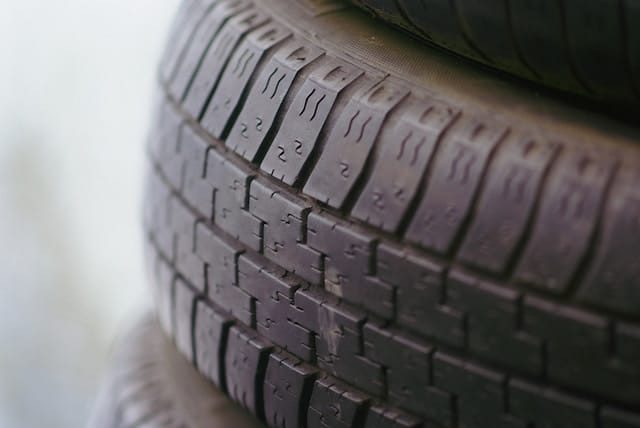
Driving Habits
Your driving habits have a significant impact on the lifespan of your tires. Aggressive driving, which may involve rapid acceleration, hard braking, and taking corners at high speed, can contribute to faster tire wear. These actions put excessive stress on the tires, leading to accelerated degradation of the rubber. Additionally, consistently driving at high speeds can generate more heat, which may also speed up tire wear.
Vehicle Load
Overloading your vehicle can also lead to rapid tire wear. Tires are designed to carry a specific maximum load. Consistently exceeding this load presses the tires harder against the road, resulting in faster wear. If you regularly carry heavy loads in your vehicle, consider investing in tires designed for higher load ratings to better handle the weight and potentially extend tire life.
Incorrect Tire Pressure
Maintaining correct tire pressure is crucial for maximizing tire lifespan. Overinflated tires have less contact with the road, concentrating wear on the center tread. Underinflated tires, on the other hand, have too much contact with the road, causing the tread on the edges to wear out faster. Regularly checking and adjusting your tire pressure can help ensure even tire wear and prolong the life of your tires.
The Impact of Underinflated Tires
When tires lack sufficient air pressure, their treads experience abnormal flexing as they rotate. This abnormal flexing leads to excessive friction, accelerating the wear and tear process. Furthermore, the increased friction can cause the tires to overheat, potentially leading to tread separation and tire blowouts.
Poor Wheel Alignment and Imbalance
Wheel alignment and balance play critical roles in tire longevity. Misalignment can cause uneven tire wear, with one part of the tire wearing out faster than the rest. Similarly, an imbalance in your tires can lead to vibrations that result in irregular and accelerated wear. Regular alignment and balance checks are essential in preventing premature tire wear.
Lack of Regular Tire Rotation
Finally, neglecting regular tire rotation can result in certain tires wearing out faster than others. Since different tires on your vehicle bear different loads and perform different tasks, they tend to wear at different rates. Regularly rotating your tires can ensure that they wear more evenly, helping to extend their overall lifespan.
[lasso id=”5547″ link_id=”2439″ ref=”amzn-fullway-hp108-all-season-truck-suv-high-performance-radial-tire-235-50r18-235-50zr18-235-50-18-235-50-18-101w-load-range-xl-4-ply-bsw-black-side-wall-utqg-380aa” sitestripe=”true”]Misalignment of Toe or Camber
Misalignment of toe or camber can significantly contribute to the fast wearing out of new car tires. The toe is the parallelism of the wheels to each other, while the camber represents the angle of the tire in relation to a perfectly flat road. Misaligned toe or camber can lead to uneven tire wear. A misaligned toe typically results in a feathered wear pattern across both front tires and inner shoulder wear on both tires. Conversely, camber misalignment often causes uneven tire wear on one side of the tire tread.
Tire and Vehicle Maintenance
Another important aspect to consider is the overall maintenance of your vehicle and tires. For example, suspension components that are worn or damaged can lead to uneven tire wear. Similarly, a vehicle that’s overdue for a tire alignment can cause tires to wear out quickly. It’s crucial to stay on top of vehicle maintenance to ensure that all parts are in good working condition and not contributing to premature tire wear.
Driving Conditions
The conditions under which you drive your car also play a role in tire longevity. If you frequently drive on rough or uneven surfaces, your tires can wear out faster due to increased friction and impact. Similarly, areas with extreme temperatures, either hot or cold, can take a toll on your tires. In hot climates, the heat can cause the tire’s rubber to degrade faster, while in very cold conditions, it can make the rubber hard and more prone to wear and tear.
Choosing the Right Tires for Your Vehicle and Driving Needs
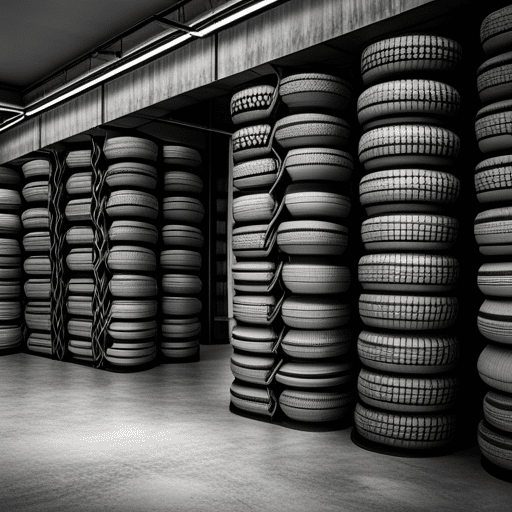
Understanding your specific driving needs and choosing the right tires for your vehicle can significantly impact how fast your new tires wear out. For example, if you frequently drive long distances at high speeds, high-performance tires might not be the best choice due to their softer rubber composition. Instead, you might want to consider touring tires, which are designed to handle higher mileage. Similarly, if you live in a city and do a lot of stop-and-go driving, you might want to look at tires designed for city driving, which can handle the wear and tear of frequent braking and accelerating.
Maximizing Your Tire’s Service Life
Check the Tire Pressure
Regularly ensuring that your tire pressure is within the recommended range (typically between 32 and 36 PSI, but this can vary depending on the vehicle) can significantly prolong the life of your tires.
Inspect Tire Components
Regularly inspect components crucial for wheel alignment, such as the ball joints. An auto repair shop can also check wheel alignment.
Check the TPMS
The tire pressure monitoring system (TPMS) alerts you when a tire has low pressure. The TPMS checks the rotating speed of diagonally opposed wheels and triggers a warning light if it detects discrepancies.
In conclusion, there are many factors that can answer the question, “why do new car tires wear out so fast?” By understanding these factors and taking steps to address them, you can prolong the life of your tires and get the most value from your investment. Always remember to maintain proper tire pressure, rotate your tires regularly, stay on top of vehicle maintenance, drive responsibly, and choose the right tires for your driving needs. By doing so, you can enjoy a smoother ride, save money in the long run, and ensure your safety on the road.
Expected Lifespan of Tires
[lasso id=”5547″ link_id=”2440″ ref=”amzn-fullway-hp108-all-season-truck-suv-high-performance-radial-tire-235-50r18-235-50zr18-235-50-18-235-50-18-101w-load-range-xl-4-ply-bsw-black-side-wall-utqg-380aa” sitestripe=”true”]Tire manufacturers often provide an estimated mileage that their tires are expected to last. This is usually specified as a treadwear rating or mileage warranty, and can range anywhere from 30,000 to 100,000 miles depending on the type and quality of the tire. However, these estimates are based on optimal driving conditions, and the actual lifespan of a tire can be influenced by a variety of factors.
The type of tire can greatly affect its expected lifespan. For example, performance tires, which are made with softer rubber for better grip and handling, tend to wear out faster than touring or all-season tires, which are made with harder rubber compounds designed for longer wear.
Environmental factors can also affect the lifespan of tires. Exposure to extreme temperatures, both hot and cold, can degrade the rubber compounds in tires and reduce their lifespan. Similarly, prolonged exposure to sunlight can cause tires to age and crack prematurely.
In general, even with perfect driving conditions and maintenance, most tires will need to be replaced after six to ten years due to the natural aging and degradation of the rubber. Always regularly inspect your tires for signs of wear or damage, and replace them as necessary to ensure safe driving conditions.
Considerations When Buying Tires
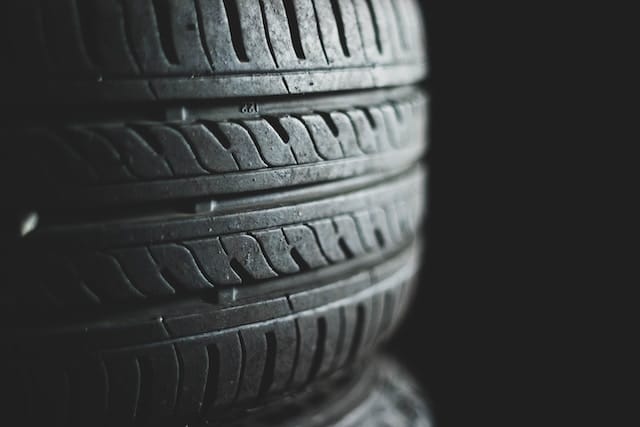
Choosing the right tire should not be based solely on aesthetics. Factors such as type, size, and speed rating should be considered to ensure optimal performance:
Type
Unless certain about a different choice, it’s advisable to stick with the type of tire that your vehicle originally came with. If considering other options like all-season or touring tires, thorough research is necessary before making a purchase.
Size
The size of the tire is essential for vehicle handling and impacts brake effectiveness, headlight aiming, vehicle height, acceleration potential, and speedometer calibration. It’s important to choose a tire of the same size as the original one.
Speed Rating
The speed rating of the tire should match that of the original tires. Installing tires with incompatible speed ratings could result in issues with cornering and handling.
